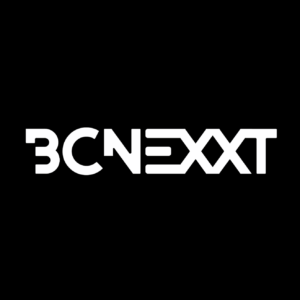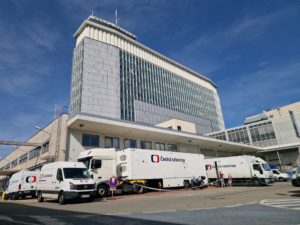
Cameron Smith
CTO, Dejero

Kevin Fernandes
CRO, Dejero
It's almost a cliché to talk about how the last few years have changed live broadcasting.
Broadcasters kept going even though events were canceled, and companies like Dejero kept them on air producing great content. The need to shift working practices to distributed models where people could work from home came almost overnight.
We heard from many of our customers that they already had the capacity to handle remote workflows and connectivity with their existing Dejero solutions, but hadn’t had a reason to harness its full power until the pandemic.
From an overall business resilience perspective, we found these new ways of working provided new challenges and created a level of vigilance that we have never seen before. Resilience has always been a primary focus for broadcasters who demanded increasingly robust forms of business continuity to ensure they stay on air—or risk the loss of advertisers, audiences and, ultimately, revenue.
We can categorize these challenges into three main areas:
- Digital Transformation: there has been a huge shift in broadcasters and media companies looking to leverage cloud and IP connectivity to reduce costs and reliance on on-prem hardware.
When planning for disaster recovery and/or business continuity, it’s important to ensure the platform or combination of platforms allows for flexibility. Having multiple forms of connectivity available, at a time when it’s needed most, gives the flexibility to carry on business as usual from any location and best possible chance to stay on-air.
- Efficiency and the desire to do more for less: how to recreate the same levels of reliability and continuity that we previously took for granted, with less budget. This has its own challenges, especially when you factor in the decentralization of content, where marketing dollars are spread over a larger base.
- Distributed Production: remote production and remote working stretches business resilience, regardless of the content being produced. It is no longer reasonable to assume people can just drive to a back-up center should any technical issues arise. We need to approach these workflows in a completely new way.

Is there a quick fix?
The drivers for remote production workflows are compelling. They simplify working practices, reduce cost and provide opportunities to cover a wider variety of live content. By encouraging geographic flexibility, they even have a more positive effect on the environment; as less equipment and less staff are required on site resulting in a reduced carbon footprint.
We’re seeing broadcasters use Dejero solutions to accelerate their digital transformation with mobile and cloud technologies. Some of these use cases didn’t even exist a few years ago, but our Resilient Wireless Technology and Smart Blending Technology are providing reliable connectivity anywhere and opening up new, untethered horizons for broadcasters.
Leading production company, Quality, made television history this past October, by achieving the first all-remote multi-sport production at the XII South American Games. It relied upon 100+ EnGo mobile transmitters and 30+ WayPoint receivers, which contributed to a production cost saving of USD $2.5million.
Being able to equip remote broadcast teams with resilient live video and internet access across a combination of platforms provides the resilience broadcasters require, with the flexibility of using multiple forms of connectivity simultaneously, driving new workflows, and improved efficiency.


If you take Quality’s all-remote workflow compared to a traditional multi-OB (Outside Broadcast) truck setup for a large-scale sports production like the XII South American Games, the movement of around six tons of extra material and 40 people has been curtailed - not to mention the installation of hundreds of kilometers of cable that would usually be required. The time and cost saved on logistics, resources and time is monumental,
Dejero’s latest mobile transmitters, the EnGo 265, EnGo 3 and EnGo 3x, represent a huge breakthrough in terms of what a single unit can do for operators on the go. Providing not only reliable transmission but also reliable Internet. It’s especially useful to those who find themselves reporting from locations with challenging network conditions (i.e. mountain sides, deserts, or in places that are crowded and congested like major events).
Continuity checklist - what should we be planning for?
So, what questions do broadcasters need to ask when planning business continuity models?

Reliability
This is key. People talk about robust failover systems, but that’s not the best way to think about reliability. Failover implies something stops working for something else to take over. It’s better to implement a robust system that uses multiple simultaneous connections to deliver enhanced reliability and continuous connectivity. This is the Dejero approach.
We’re dealing with real-time video signals, with new pictures (frames) being generated fifty to sixty times a second, without exception. If a frame drops on live television, everyone sees it. Broadcasters need to rely on a seamless service where failovers are not required.
Dejero’s Resilient Wireless Technology, Smart Blending Technology and Hybrid Encoding Technology ensure ultra-reliable transmission. These technologies blend together wired (broadband, fiber) and wireless (3G/4G/5G, Wi-Fi, satellite) IP connections from multiple providers to form a virtual ‘network of networks’ to provide robust connectivity even in the most challenging of environments.
Ease of use
With multiple networks available and a wide range of variables to contend with, connectivity to multiple platforms should be easy to set up and require minimum intervention - just set and forget.
Flexibility
A benefit of decentralized production is broadcasters can supply a wider range of content, such as lower tier or niche sporting events. Knowing that you have access to a combination of mobile platforms, devices and networks that guarantee the level of certainty you need gives you the best chance of staying on air and the confidence to be able to do your job properly.
A great example of how flexibility played a key part in business resilience during the height of the pandemic was when Dejero made it possible for NBC San Diego, KNSD-TV/ KUAN- LD, to turn its new mobile broadcast truck into a self-contained, end-to-end mobile TV studio. That was accomplished by providing enough bandwidth to work fully independently in the field, processing, editing, and distributing live raw video without reliance on teams and equipment located at the broadcast facility.
Security
Broadcast resilience should include protection against events such as hacking and the security of content and editorial. They need fundamentals like security governance and the ability to implement specific controls to minimize risk.
Dejero uses a security-hardened Linux OS and offers end-to-end AES 256-bit encryption to ensure a secure video signal. It also offers HMAC packet signing and support for a wide-range of third-party VPNs.

Standards
Modern broadcast infrastructures require vendors to talk to each other in the same language and standards provide the ability to do so. Dejero supports EBU standards, and we’re completely open and transparent about where we are within all broadcast standards. We are also FirstNet® Ready.
FirstNet is built with AT&T in a public-private partnership with the First Responder Network Authority (FirstNet Authority) – an independent agency within the U.S. federal government. It’s designed with and for first responders, public safety agencies and extended community that could be called on to support them. The capabilities we offer further cements our commitment to their ‘always on, always available’ critical connectivity needs in the field.
Cost
Having a reliable system that scales in terms of cost is important. One consequence of broadcasters broadening their range of content is it isn’t all of equal value. Having the flexibility to use a combination of devices to create an appropriate workflow for any budget is a valuable consideration.
Unbridled broadcasting, wherever you are
Broadcasters should be confident that their remote connections are as stable as a wired connection.
Factor in regular software updates, as well as support and dedicated customer care, and your system will always be in step with the latest technological developments and, most importantly, it will serve and scale to your specific business needs.
By aggregating multiple networks into a single service, Dejero’s patented Smart Blending Technology delivers the critical connectivity to go live or transport video in real-time.
Providing reliable and continuous connectivity over simultaneous broadband, cell and satellite links means significantly enhanced uptime for users wherever they are – whether that’s at the studio, at home, at a remote venue or in the middle of a field. That’s powerful.









